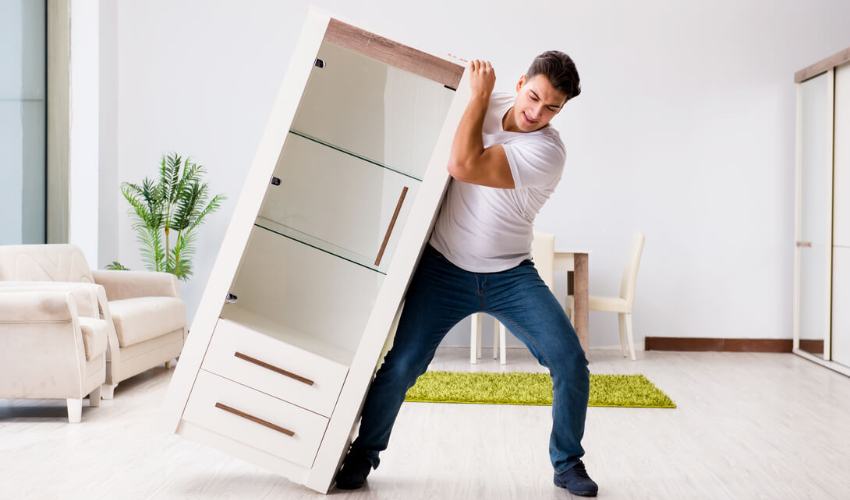Wood furniture finishes are usually applied to protect the surface from dust, stains, scratches, and mildew growth. Refinishing furniture with the right material requires multiple factors to consider. If you have a DIY plan to refinish your repaired furniture pieces, this informative article is for you.
10 Best Tips To Choose Right Finish For Furniture
Several environmental factors may damage the furniture surface without selecting an appropriate finish material. Proper furniture maintenance is necessary to enhance its life and durability. However, the furniture surface gets damaged or dried due to long-term exposure to dust, stains, moisture, and harmful UV rays. To overcome this problem, choose the right finish material that can craft a protective covering on your furniture.
In this guide, Carpenter Abu Dhabi has mentioned some expert tips for choosing the perfect finish material for furniture items. Furthermore, we have also enlisted the main types of coating materials for your better understanding of furniture finishing.
- Consider Project Type
- Exposure To Humidity & Sunlight
- Expertise Level
- Required Tools
- Color Shade
- Durability Factor
- Sustainability
- Overall Appearance
- Safety Measures
- Drying Time
1- Consider Wood Type
Before choosing any coating material for your furniture, you must consider the type of wood that will be used. Most commonly natural woods, MDF, and particle boards are used in furniture crafting. If you need a glossy furniture surface, you should go with a wood-varnish finish.
Note: Before applying the material on the entire furniture surface, test it on an inconspicuous wood area to determine its nature, look, and durability.
2- Exposure To Humidity & Sunlight
If you’re going to finish an outdoor furniture piece, you must choose a material that ensures maximum weather, UV, stain, and dust resistance. For indoor furniture items, you can go with any material per your requirements.
3- Expertise Level
Usually finishing process requires cloth, brush, or spray for wood coating. You must apply multiple layers of stain or binders along with the finish. If you’re a beginner, you must choose a material that can be easily applied on furniture surfaces with minimal coating layers.
4- Required Tools
A wide range of material-specific tools are used in the coating process such as sandpaper, thick and thin strippers, rag cloth, power sander, bristle brush, and sprayers. Before opting for any finish, ensure you have all the essential tools required for that coating.
5- Color Shade
Some coating materials give solid or dark colors to your furniture surfaces over time such as lacquers or shellacs. However, water-based materials keep the natural outlook of wood surfaces intact. You can go with any material per your desired preferences.
6- Durability Factor
Different types of finishing materials provide different durability levels for wood. Some offer only UV and heat resistance but do not ensure scratch and damage resistance just like Wax. However, Lacquer provides excellent resistance against scratches, heat, moisture, and stains. Therefore, choose a material that ensures excellent resistance against all environmental factors.
7- Sustainability
While selecting any coating material, you must consider the sustainability factor. Because solvent-based materials are prone to various environmental factors and varnishes paint thinners release toxic fumes in the atmosphere. To avoid these problems, you must choose any oil-based material due to its sustainable manufacturing.
8- Overall Appearance
To enhance the ambiance of your furniture piece, you should never ignore the appearance factor. Choose a material that can sustain the natural texture and color of your furniture surface. High-quality varnishes take extra effort to coat but give a glossy and natural look.
9- Safety Measures
The furniture protective coating materials are composed of various organic and inorganic solvents. Some flammable and toxic solvents are harmful to health and the environment just like lacquer. We always recommend using oil-based materials for your maximum safety.
10- Drying Time
Different materials exhibit different periods for drying and curing. It is best DIY practice to consider the drying and curing time of all materials before choosing. For example, lacquer and shellacs take just a few hours to dry and cure while varnishes require at least 24 hours for complete drying and curing.
Types Of Wood Finishing Materials
Two types of materials are used in the wood-finishing process such as surface and penetrative finish.
Penetrative Finish
- Oil-based Material
- Wood Stain Material
- Wood Varnish
Surface Finish
- Wax Finish
- Lacquer Material
- Shellac Material
- Thick or Thin Paint
- Polyurethane
Last Words!
To make your DIY finishing project smooth and flawless, we have enlisted the 10 best tips for choosing the right coating material for your furniture pieces. After considering these valuable tips, you will not only enhance your furniture’s durability but also make it more aesthetic. In addition, we have also enlisted the main types of wood coating materials.
Now, it’s your time to choose the right material that suits your furniture’s functionality and aesthetic.










